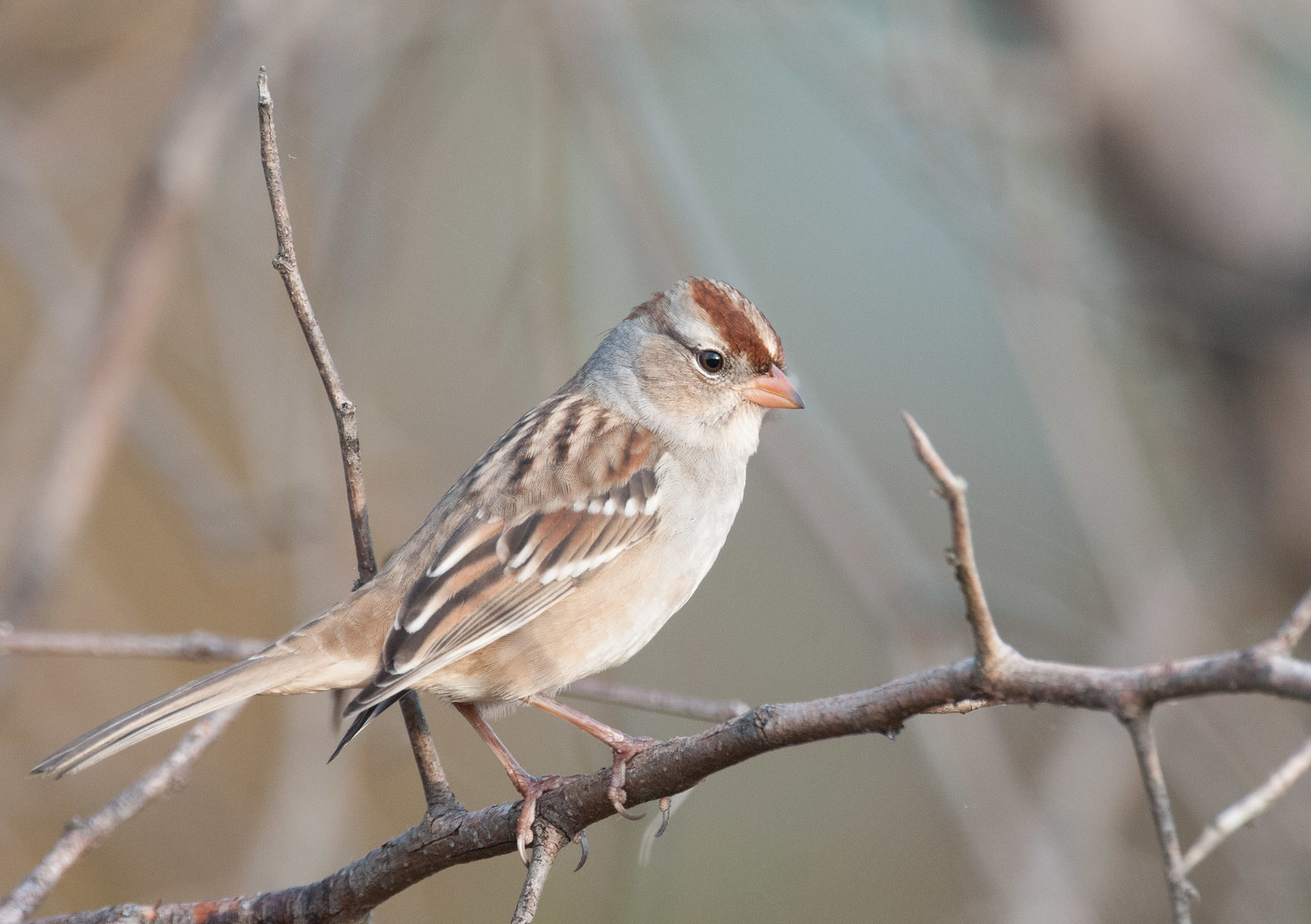| Infrequently Seen |
White-crowned Sparrows show up infrequently at Monticello Park. They are much more common in the Western United Stated. In the East, they are more likely to be seen in the winter and during migration.
Where to See Them in the Park
White-crowned Sparrows are generally seen on the ground or low in bushes, but there is no best place to look for them. It is possible that some White-crowned Sparrows pass through the Monticello Park without being correctly identified.
Physical Description

The sexes of adult White-crowned Sparrows are similar. Adults look very grayish. The bill is small, and the color can vary from yellow to orange to pink. The black-and-white crown stripes are a key fieldmark. Unlike the White-throated Sparrow who has similar crown stripes, White-crowns do not have a yellow spot near the bill, and their throat is not bright white. White-throated Sparrows have a blackish bill.

Immature White-crowned Sparrows have a tan-and-brown crown. They never have any yellow near the bill like a White-throated Sparrow. Because some immature White-crowned Sparrows have a pink bill, they could be confused with a Field Sparrow, who is smaller and more delicate-looking.
Vocalizations
The song of the White-crowned Sparrow is variable, and hearing it at Monticello Park would be unusual. The song is somewhat sweet, featuring a long introdutory whistle, followed by trills. The call notes can be a loud pink or a softer tseep.
Hear the vocalizations of the White-crowned Sparrow.Notes
During the COVID-19 pandemic, University of Tennessee Professor Elizabeth Derryberry analyzed the singing behavior of White-crowned Sparrows near the Golden Gate Bridge in San Francisco. Her research investigated how the environment affects sensory signaling systems, and birdsong in particular, and how these signaling systems affect competition in mating behavior. Professor Derryberry found that in response to the decreased traffic noise, the White-crowned Sparrows sang twice as softly, but the song traveled four times farther than when traffic noise was at normal, pre-shutdown levels. George Mason University Professor David Luther, who also worked on the study, said that with less traffic noise, the male White-crowned Sparrows were better able to protect their territories from other males and better able to attract a mate or several mates.
Origin of Names
Common Names: White-crowned from the head plumage. Sparrow from the Anglo-Saxon spearwa, which means flutterer.
Genus Name: Zonotrichia means banded thrush.
Species Name: Leucophrys means white eyebrow for the white line over the eye.
White-crowned Sparrow video footage
Return to the Index
